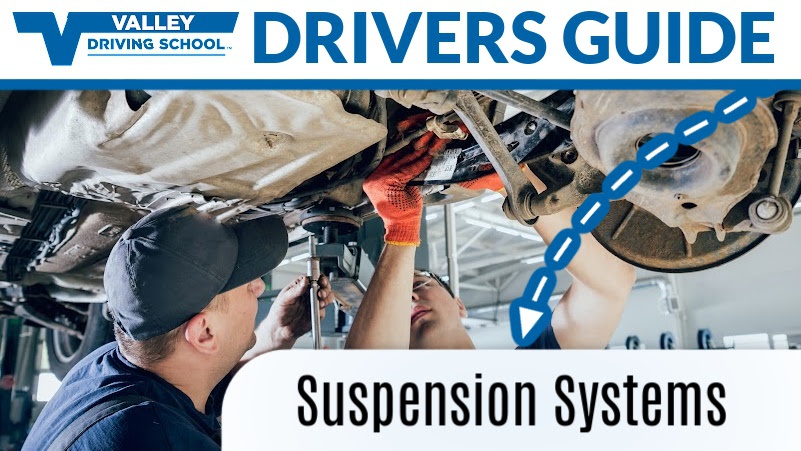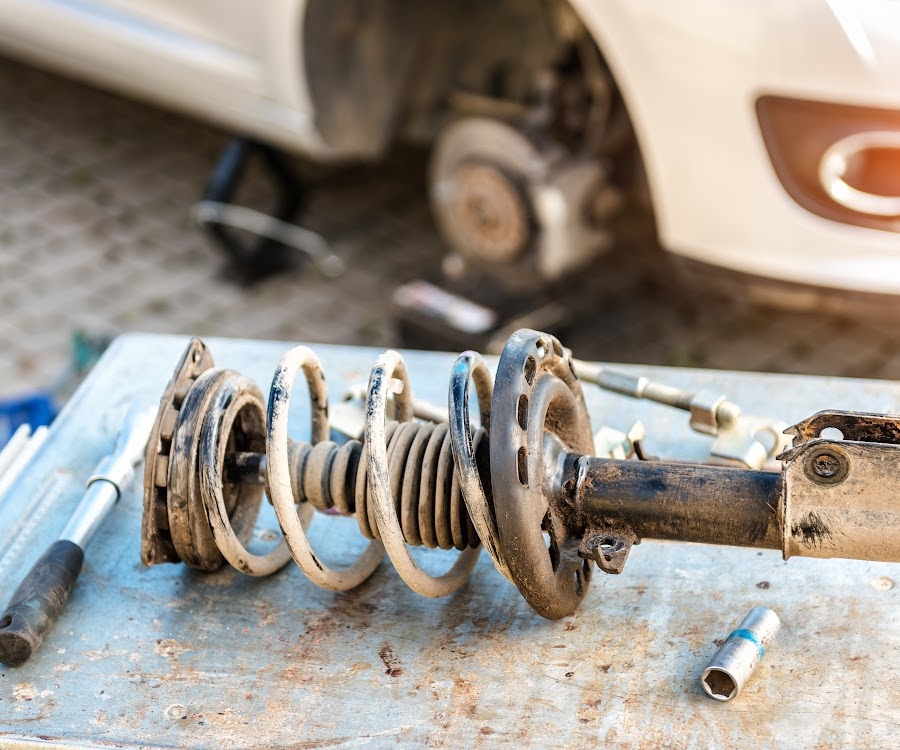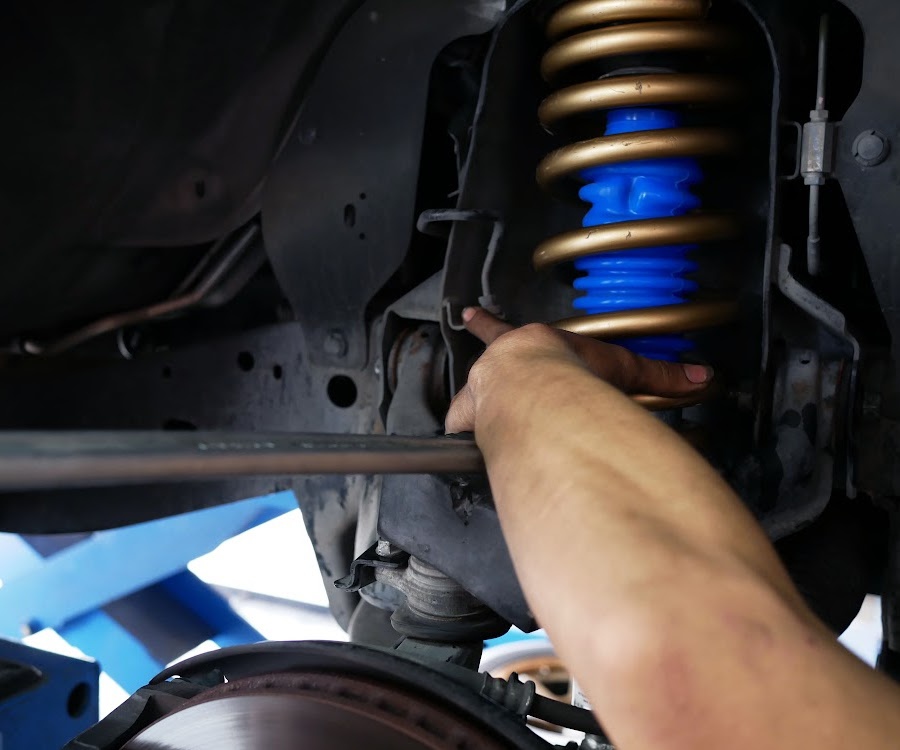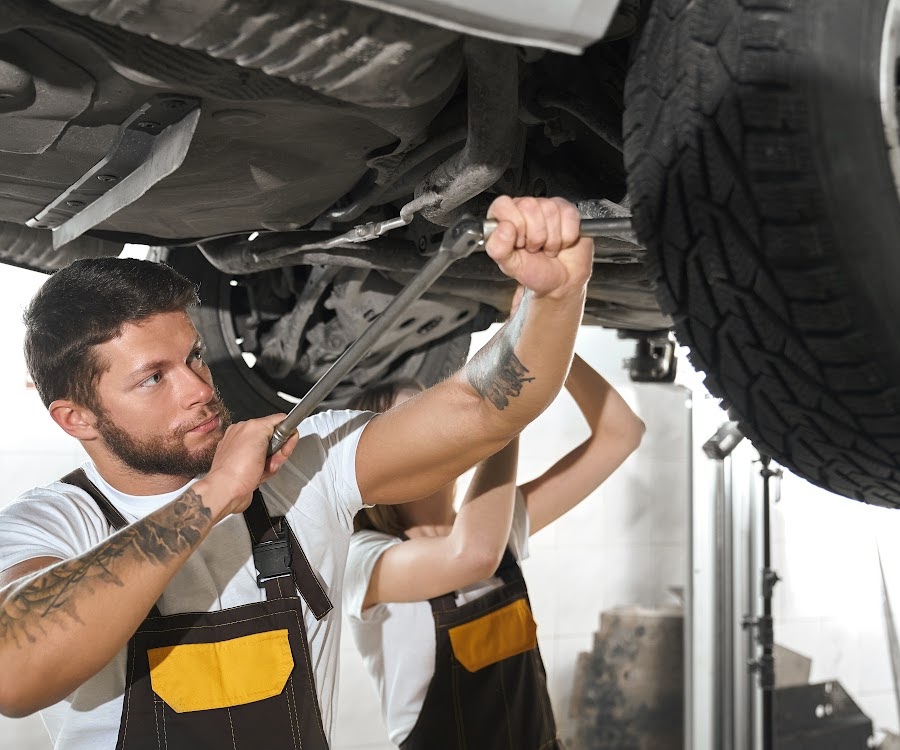Your vehicle's suspension system is the unsung hero of any driving experience, working behind the scenes to ensure every journey feels like a breeze. It plays a pivotal role in providing a smooth and safe ride, contributing to vehicle control, stability, and overall comfort.

We’re here to help you understand the inner workings of a vehicle's suspension system, including its functions and why it's important. Knowing why it's more than just springs and shocks is your ticket to a comfortable and safe journey on the road.
What is a suspension system?
A suspension system is a collection of parts that connect the vehicle to its wheels. It includes things like springs, shock absorbers (also known as dampers), struts (in some cars), control arms, and linkages. This system's primary job is to handle bumps and shakes that happen while driving, keeping the wheels in contact with the road which results in a smoother and safer ride.

The suspension system's primary goal is to enhance ride comfort by absorbing bumps, vibrations, and irregularities on the road. Springs, either coil or leaf, act as shock absorbers, cushioning the impact and preventing excessive jolts from reaching the vehicle's cabin. A well-maintained suspension system contributes significantly to vehicle stability and control. It helps in maintaining tire contact with the road surface, providing better traction and grip, especially during cornering, braking, or sudden maneuvers. This stability minimizes body roll and keeps the vehicle steady, enhancing overall handling and safety.
An efficiently functioning suspension system ensures that the tires wear evenly. When the suspension system is worn or misaligned, it can lead to uneven tire wear, reducing tire lifespan and compromising road grip and safety.
What are the components of a suspension system?
Springs are a key part of the suspension system. They take in the energy from bumps and rough spots on the road so that it doesn't hit the car's frame directly. Most cars use coil springs, which are shaped like a spiral. Some trucks or older cars use leaf springs, which are made of stacked, flat pieces of metal. These springs help make the ride smoother by cushioning the impact from the road.

Shock absorbers, or dampers, work in conjunction with springs. Their primary role is to control the movement of the springs, preventing the car from bouncing excessively after encountering bumps. Some vehicles have struts, which combine the functions of springs and shock absorbers into a single unit, providing structural support to the vehicle's suspension system and often including a coil spring surrounding the shock absorber.
Control arms, also known as wishbones, and linkages connect the wheels to the chassis. They help manage the wheel's movement and alignment, allowing for a smoother ride and better steering control.
Why is it important to have a well-maintained suspension system?
A well-functioning suspension system is essential for safe driving. It ensures better handling, stability, and control, reducing the risk of accidents, especially during sudden maneuvers or under adverse road conditions. An efficiently working suspension system provides a comfortable driving experience by minimizing road shocks and vibrations, making your journey more enjoyable, whether it's a short commute or a long trip.
Regular maintenance of the suspension system contributes to the overall longevity of your vehicle. It prevents premature wear and tear on other components, such as tires and steering systems, ensuring they last longer. While some maintenance tasks are best left to professionals, there are a few easy things you can do yourself to keep your suspension system in top shape like tire pressure checks and visual inspections.
Maintaining proper tire pressure, as specified in the vehicle's manual or on a sticker inside the driver's door jamb, is crucial for optimal suspension performance and overall tire wear. Regularly check your tire pressure, including the spare, with a reliable tire gauge and inflate them as needed. During car washes or tire rotations, take a moment to visually inspect your suspension components for any signs of damage or leaks. Look for cracks in bushings, control arms, or shock absorber boots. While you can't diagnose problems definitively this way, noticing any of these issues warrants a visit to a mechanic.
Most suspension systems are designed for everyday driving conditions, and how you handle any vehicle can significantly impact its lifespan. Consider avoiding aggressive maneuvers, like slamming on the brakes less, taking corners too quickly and speeding over bumps and potholes. These actions put extra stress on the suspension components, accelerating wear and tear. In addition to changing your driving behaviours, pay attention to your car's weight limit and avoid overloading it with passengers or cargo. Exceeding the recommended weight capacity can strain the suspension system and lead to premature failure while driving and avoid overloading the vehicle’s weight limit.
How can you tell if a vehicle has suspension issues?
Suspension systems face many challenges every time you drive. Although it's built to be tough, things like bumpy roads, hot or cold weather, old parts, and even how you drive can cause wear and tear over time. This wear and tear can eventually lead to suspension problems.

Uneven tire wear, such as bald spots or excessive wearing on specific areas of the tires, could indicate suspension problems. If your vehicle excessively bounces after encountering bumps or dips, or if it nose-dives when braking, it's a sign that the suspension system might need attention. If your vehicle drifts or pulls to one side while driving on a straight road, it could be due to alignment issues caused by suspension problems. Unusual knocking, clunking, or rattling noises, especially when going over bumps, indicate potential issues with the suspension system.
Should you notice any signs of suspension problems, it's crucial not to delay addressing these issues. Schedule a thorough inspection with a certified mechanic or automotive professional immediately. Timely attention to these warning signs can prevent further damage to your suspension system and other vehicle components. Ignoring these signs might compromise your safety and lead to more significant repairs down the road. Prioritize your safety by promptly addressing any suspected suspension issues and allowing a professional to assess and rectify the problem.
–
Keeping your suspension system in top shape has significant safety benefits. It doesn't just mean a smoother ride; it plays a big role in keeping you safe, in control, and keeping your car running longer. Give your suspension some love with regular checks and maintenance, and you'll feel the difference.
